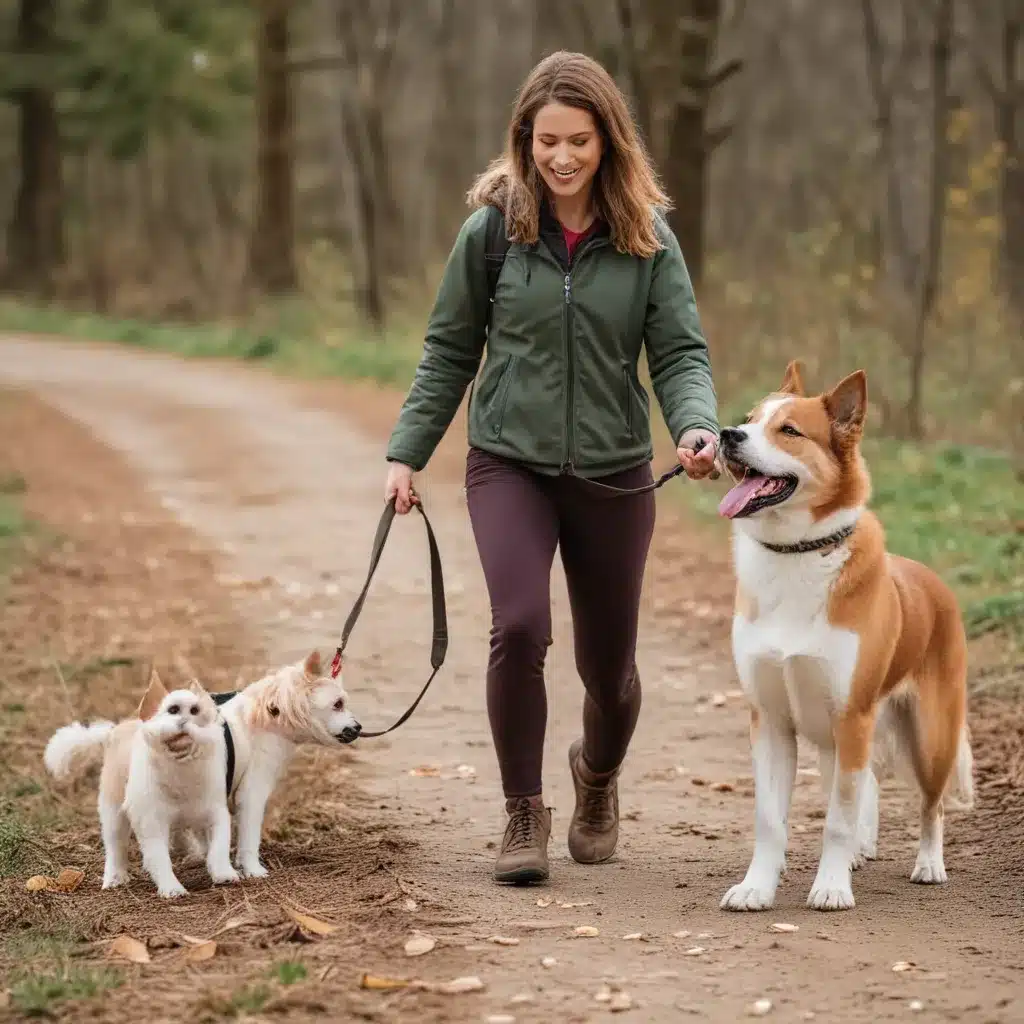
Unleashing the Power of Positive Reinforcement
As a lifelong dog enthusiast, I’ve seen my fair share of training methods come and go. From the old-school, dominance-based approaches to the latest positive reinforcement techniques, the dog training landscape has certainly evolved over the years. But through it all, one thing has remained crystal clear to me: the power of reward-based training to forge an unbreakable bond between a pup and their human.
Let me share a story that really drives this point home. A few years back, I had the pleasure of working with a Chinese Shar-Pei who had, unfortunately, been subjected to some rather harsh training tactics in the past. This poor pup had been zapped with a shock collar every time he got a little overzealous around other dogs on the leash. Well, you can probably guess what happened – within a matter of weeks, this once friendly, exuberant dog had become downright aggressive towards his canine counterparts. The mere sight of another dog had become a predictor of pain for him.
This heartbreaking scenario perfectly encapsulates the fundamental flaws of punishment-based training. You see, dogs have a way of quickly toughening up to weak punishments, and when owners (or even well-meaning trainers) don’t understand the level of force required to immediately extinguish a behavior, the result is often a never-ending cycle of ineffective reprimands. And as we all know, that’s a sure-fire recipe for the abusive treatment of our four-legged friends.
The Science of Positive Reinforcement
Now, I know what you’re thinking – doesn’t every dog trainer worth their salt use some form of correction or punishment? Well, the truth is, even some of the biggest names in the business, like Patricia McConnell and Dr. Sophia Yin, have been hesitant to completely rule out the use of corrections. But here’s the key difference: the corrections they endorse are not about inflicting pain or fear, but rather about gently redirecting the dog’s attention and modifying their behavior.
You see, the science is clear – positive reinforcement training not only avoids stressing out our canine companions, but it’s also far less stressful for us as owners and trainers. When the learning process is kept fun and rewarding, our pups become genuine partners in the journey, and the results happen much more quickly. After all, dogs love having a good time, so why on earth would we want to train them in a way that makes them (and us) miserable?
The Anatomy of Reward-Based Training
Alright, now that we’ve established the benefits of positive reinforcement, let’s dive into the nitty-gritty of how it all works. You see, there’s a specific formula that trainers like myself swear by, and it’s all about tapping into your pup’s natural cravings and desires.
It all starts with identifying what truly motivates your furry friend – is it food, toys, or perhaps a good old-fashioned game of tug-of-war? Whatever it is, you’re going to use that craving to get their attention and teach them the commands you want them to learn. And the best part? If your pup does what you ask, they get the reward. With a little repetition, it becomes almost second nature.
Next up, we’ve got the command itself. This is the word you’ll use to communicate your desired behavior, and it’s important to introduce it only after your pup has mastered the associated cue. That way, they’ll instantly connect the verbal instruction with the physical action.
But wait, there’s more! The cue is the real secret sauce here. This is the specific movement or action you’ll use to elicit the behavior you want to teach. And this is where you can really get creative, experimenting with different techniques until you find what works best for your individual pup.
Now, just when your dog thinks they’ve got it all figured out, you throw in the marker – a simple “yes!” or the distinct click of a clicker. This lets your pup know they’ve nailed it, and that the reward is on its way. But don’t hand it over just yet – wait a beat before delivering that well-deserved treat or praise. This subtle delay helps solidify the connection between the behavior and the payoff.
Putting it All Together
With this simple five-step formula, you can teach your pup just about anything, from the basics like “sit” and “stay” to more complex tricks like fetching you a cold one from the fridge. And the best part? You get to bond with your canine companion in the process, turning them into a true partner in the learning adventure.
So, what are you waiting for? Grab a handful of your pup’s favorite treats, get creative with those cues, and start forging an unbreakable relationship through the power of positive reinforcement. Trust me, the rewards (both for you and your furry friend) will be more than worth it.
And remember, if you ever need a little extra guidance, you can always swing by iHaveDogs.com – we’ve got a wealth of resources to help you and your pup navigate the wonderful world of reward-based training.

